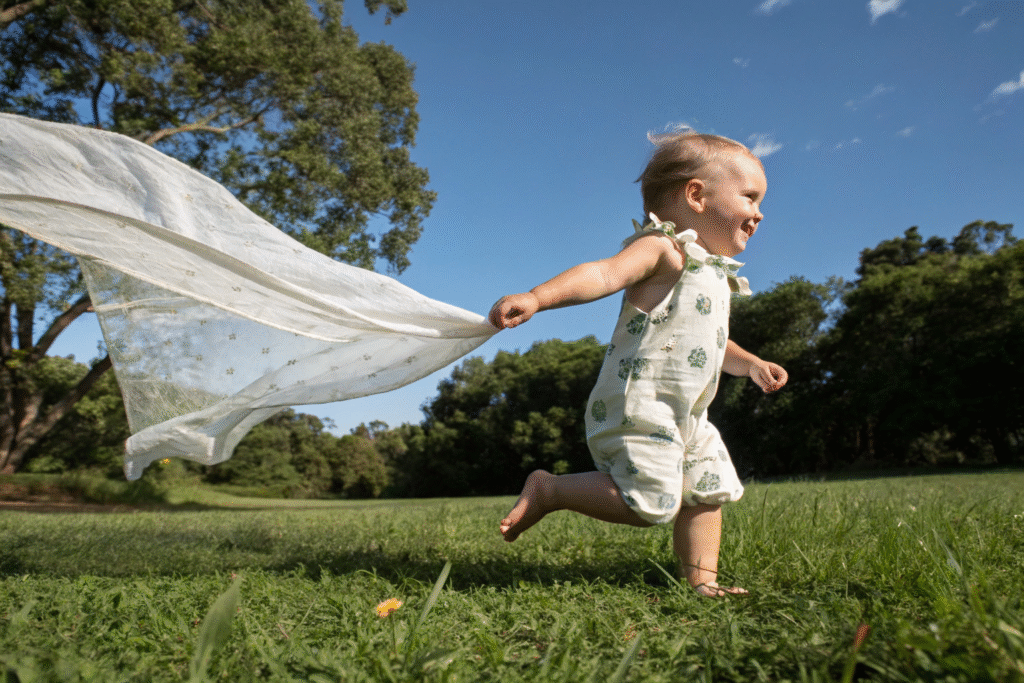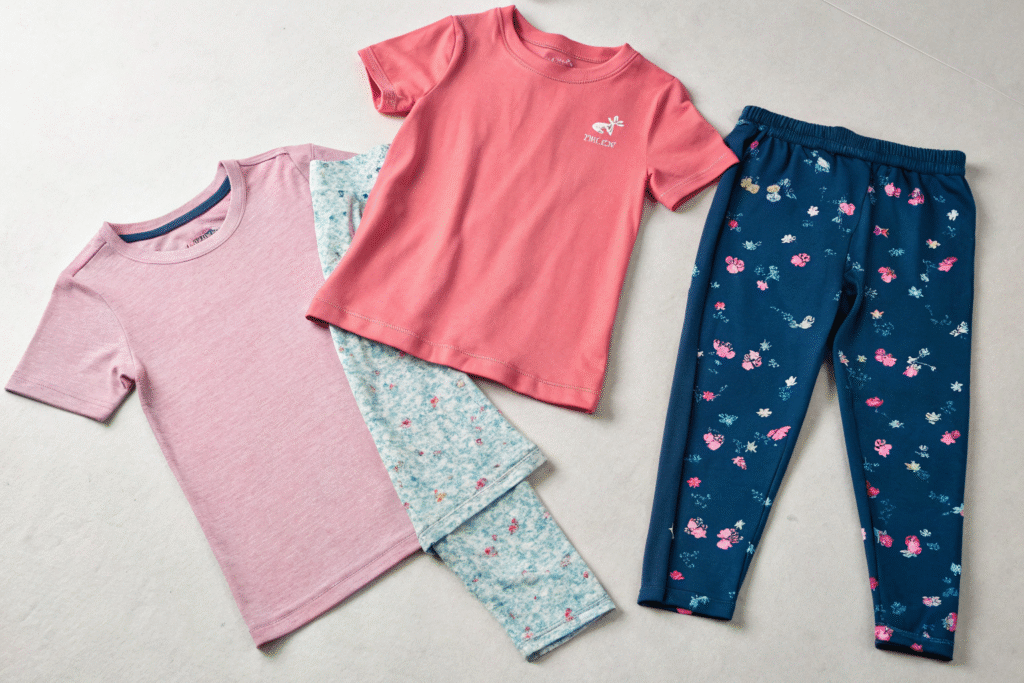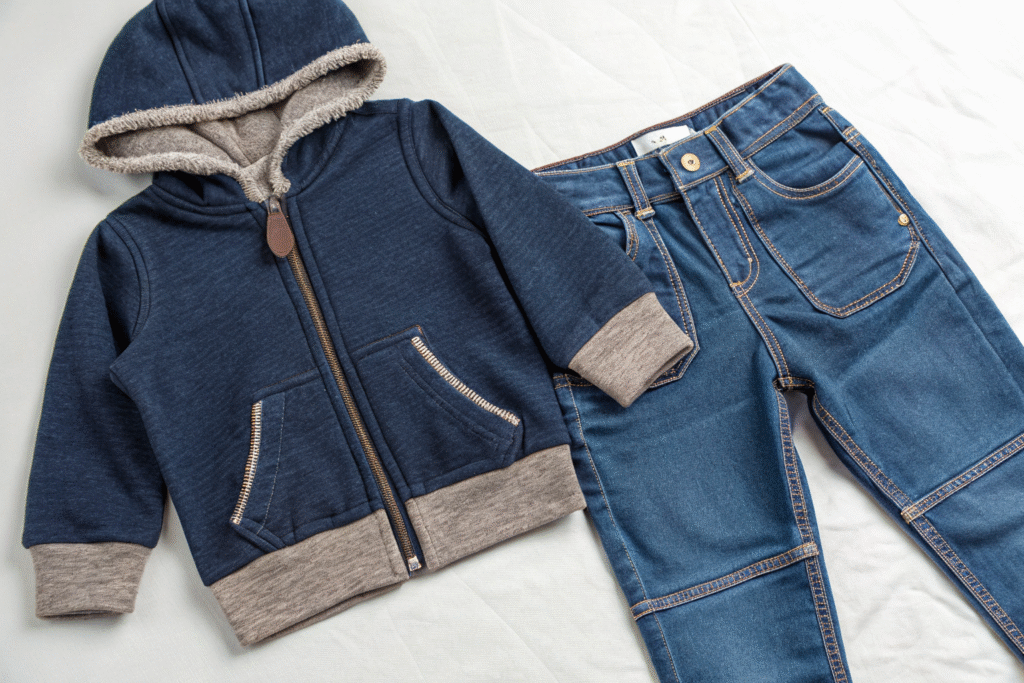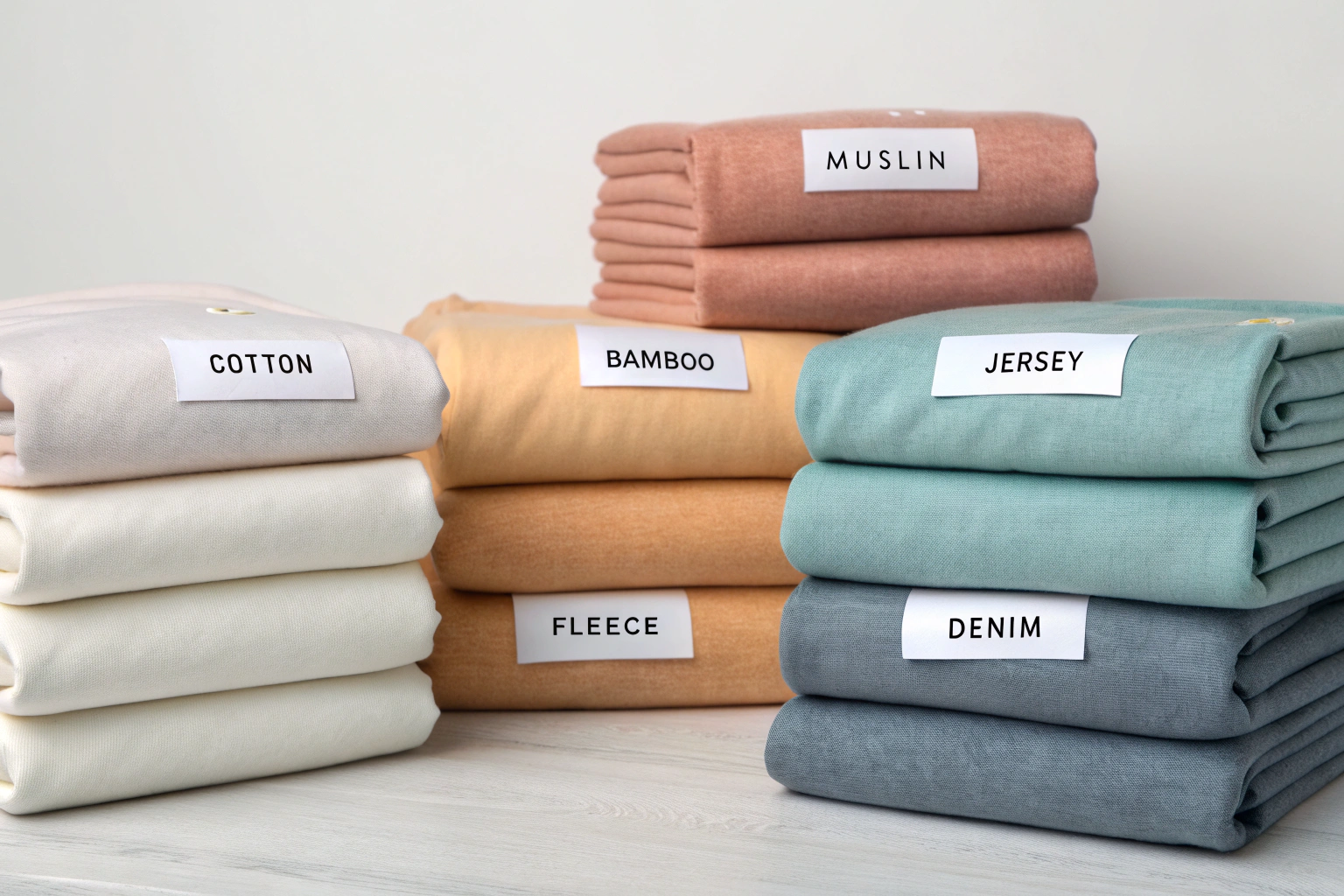Choosing the right fabric for kids is more than just picking what feels soft. As a children’s clothing manufacturer, I’ve worked with brands across the globe who demand not only comfort but also durability, safety, and style. Children are active, their skin is sensitive, and their clothes must handle frequent washing — all while looking good.
The most suitable fabrics for kids include organic cotton, bamboo, jersey knit, fleece, denim (for structured wear), and muslin. Each serves a purpose depending on the garment type, season, and age group. The best fabric strikes a balance between softness, safety, stretch, and wear resistance.
Why is organic cotton a top choice for children?
Organic cotton is the most widely used and trusted fabric in children’s fashion. It’s breathable, naturally soft, and free from harsh chemicals — perfect for sensitive skin.
Organic cotton is hypoallergenic, durable, and breathable, making it ideal for babywear and everyday garments. It’s used in bodysuits, T-shirts, sleepwear, and more due to its all-season comfort.

What makes organic cotton better?
- Free from pesticides and synthetic dyes
- Strong fibers that hold up to washing
- Smooth, soft texture without skin irritation
Many premium kidswear brands rely on certified organic cotton, and at Fumao Clothing, we frequently supply OEKO-TEX® and GOTS-certified cotton garments to clients in the US and Europe.
Is bamboo fabric good for active or sensitive kids?
Bamboo fabric is gaining traction in modern kidswear due to its sustainability and unmatched softness. It also has temperature-regulating and antibacterial qualities.
Bamboo is highly breathable, moisture-wicking, and naturally antibacterial, making it a smart choice for hot climates or active kids. Many brands use it for pajamas, underwear, and sleep sacks.

Is bamboo safe for daily wear?
Yes, as long as it’s responsibly processed into viscose or lyocell form. It also offers:
- Built-in stretch
- Odor resistance
- Great drape and movement
It’s best to double-check if the bamboo fabric meets international certifications if you’re reselling it under your brand.
What knit fabrics work well for kids’ everyday outfits?
Knitted fabrics like jersey and interlock are widely used for kids’ T-shirts, leggings, and dresses due to their flexibility and softness. These fabrics move with the child, which is essential for comfort and play.
Jersey knit is stretchy, breathable, and lightweight, making it ideal for casual kidswear. Interlock knit, which is slightly thicker, is better for cooler months.

What are the benefits of knit fabric for kids?
| Fabric | Feel | Best Use |
|---|---|---|
| Jersey | Light & stretchy | T-shirts, pajamas, dresses |
| Interlock | Soft & thick | Joggers, sweatshirts, long-sleeves |
Knit fabrics hold up well after washing and resist wrinkling — features parents love.
Are structured fabrics like denim and fleece safe for kids?
Absolutely. While they’re not as soft as knits, structured fabrics provide durability and form, especially in outerwear or bottoms. When softened or blended properly, they’re very kid-friendly.
Fleece is cozy and warm, perfect for jackets and hoodies, while soft-washed denim is great for pants, overalls, and casual jackets. Both fabrics are excellent for fall and winter lines.

What should you look for in structured fabric?
- Pre-washed or brushed fleece for softness
- Lightweight or stretch denim for flexibility
- Strong seams and reinforced knees in denim
Use these fabrics sparingly or combine them with stretch panels for better movement in toddler wear.
Conclusion
The best fabrics for kids are those that combine comfort, functionality, and safety. Cotton and bamboo top the list for softness and breathability, while jersey knits and fleece offer versatility and seasonal use. For structured pieces, look to pre-washed denim or brushed fleece. At Fumao Clothing, we help global buyers select the right fabrics based on climate, design, and function — ensuring every garment delivers both comfort and performance. Whether you’re launching a kidswear brand or sourcing reliable textiles, choosing the right fabric makes all the difference.










